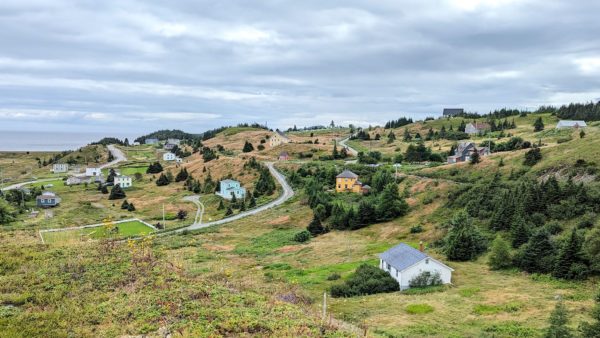
The Bonavista Peninsula contains some of the oldest settlements on the island of Newfoundland. Though definitive proof has been elusive, Italian explorer Giovanni Caboto (aka John Cabot, while he was sailing for the king of England) is reported to have landed at Cape Bonavista in 1497, claiming this part of the New World for his sponsor. (Fortunately, we have better records of our own travels, and definitive proof of our visit in 2023 will also be presented here, though we’re claiming nothing.)
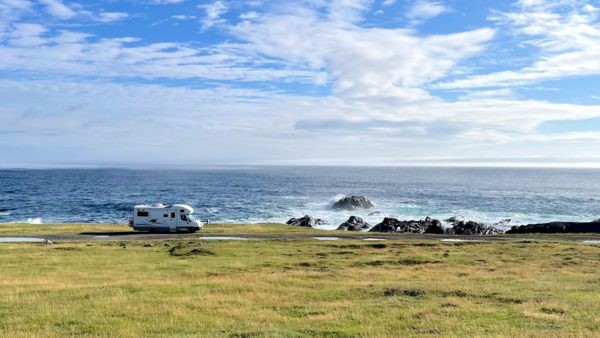
Like many coastal communities in Newfoundland, the town of Bonavista reinvented itself after the cod moratorium as a tourism center. As part of that transformation, it’s become the John Cabot center of the province. Research has been underway for nearly 50 years to uncover documents and gain more detailed information about the Genoese explorer’s expeditions to the new world. Documents do show Cabot and his crew returned to Bristol, England in 1497 having claimed the ‘New Found Land’ for England, although exactly where Cabot landed is not really known beyond a narrow range of the Newfoundland coast.
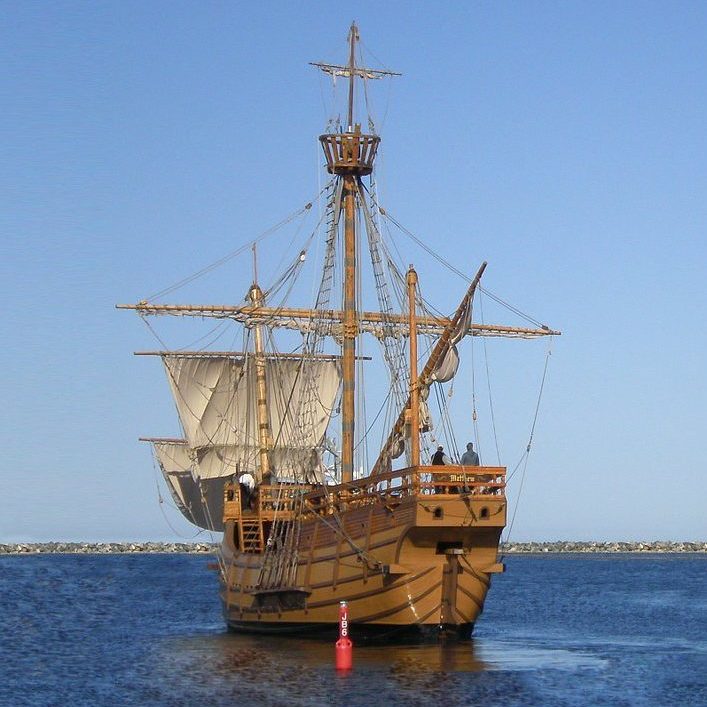
To commemorate the 500th anniversary of John Cabot’s discovery, the governments of the UK and Canada agreed that Bonavista was close enough to the site of this discovery for a celebration. A full-scale replica of John Cabot’s boat was built in England and sailed to Bonavista, arriving to a welcome by Queen Elizabeth on June 24, 1997. Shortly thereafter, a second full-scale replica, the Legacy Matthew, was built in Bonavista. Some unfortunate maintenance issues required it to be placed in drydock in 2011 until funding for repairs can be found, however tours of the boat are available and we got to visit a bit of this history. The rigging required to sail this ship across the North Atlantic is impressive. The tiny sleeping berths and galley put in perspective the challenges of life at sea in those early days of exploration and discovery. And made all the space in our RV seem luxurious!
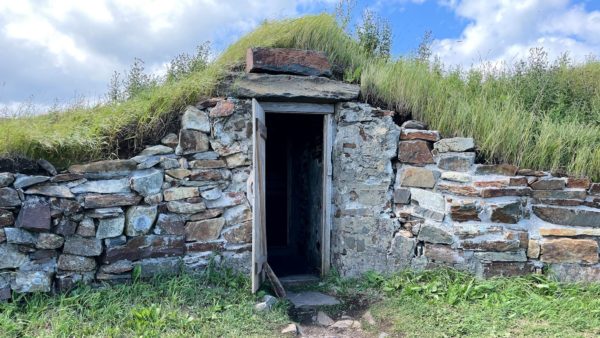
A little ways down the road from Bonavista, the village of Elliston (pop~300) has a split personality. It’s the Root Cellar Capital of the World with 135 well-preserved, mostly underground, rock-faced root cellars spread throughout the town. On this rock (Newfoundland), in this harsh climate, it’s challenging to grow anything but root vegetables and they need to be preserved for the local residents to overwinter – one can’t live on salted cod alone! Despite the availability of modern refrigeration, many root cellars are still in active use as the natural temperature and humidity range they provide is at least as good as a refrigerator for these vegetables, and inground storage is more energy efficient.
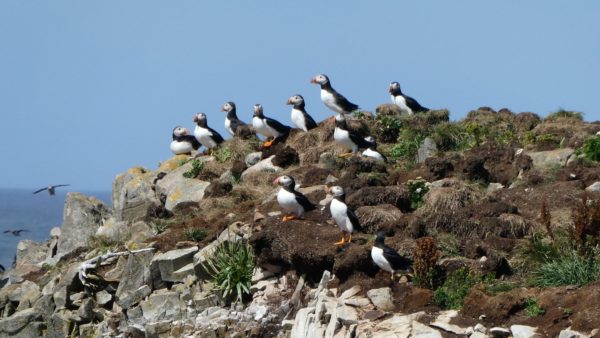
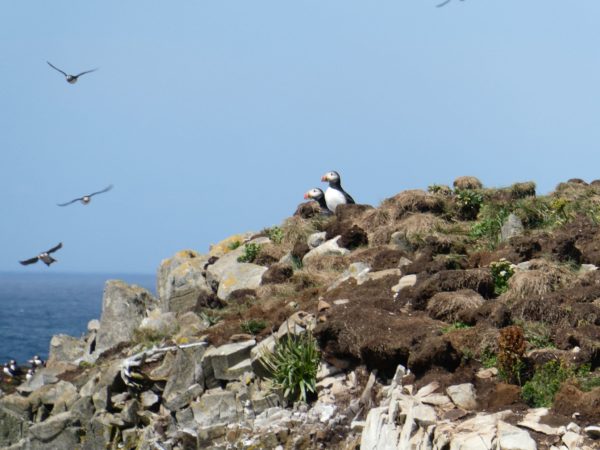

From May through September, Elliston is also home to thousands of pairs of nesting puffins. Puffins live out at sea and come to coastal cliffs or near shore islands to mate. The puffin colony on a tiny island just off the shore of Elliston is the closest puffin viewing area in North America. They’re so colorful! Their rounded heads and bodies and short wings give them an advantage when fishing underwater, and a characteristic look while flying… kinda like a cross between a small penguin and a giant bumblebee. Puffins are so much fun to watch! And so very photogenic.
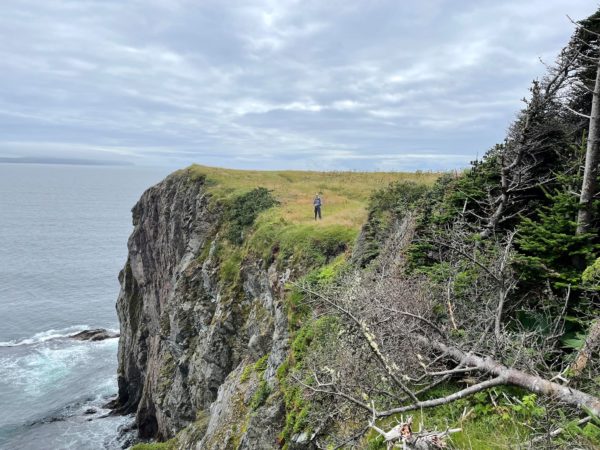
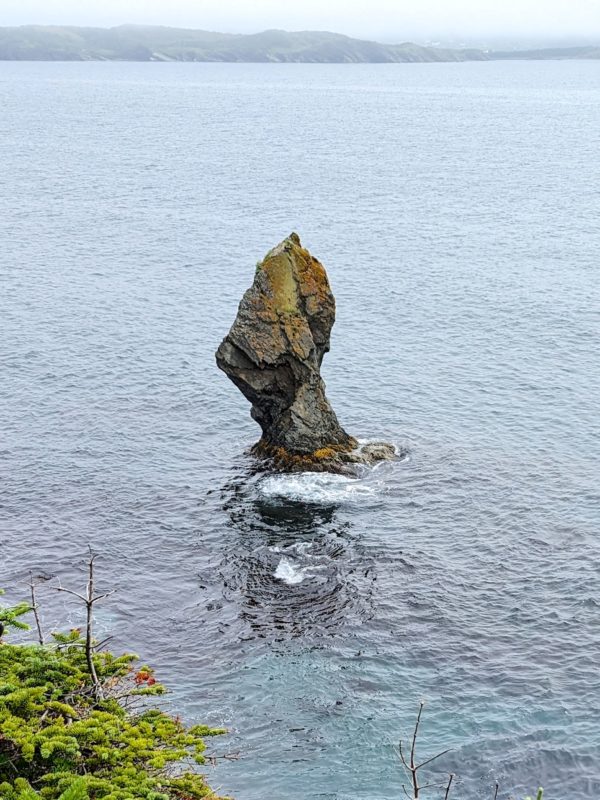
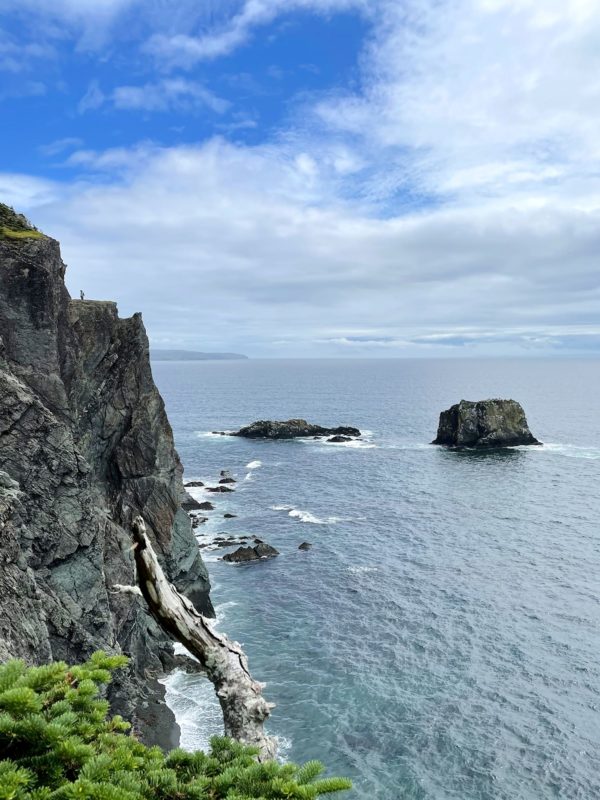
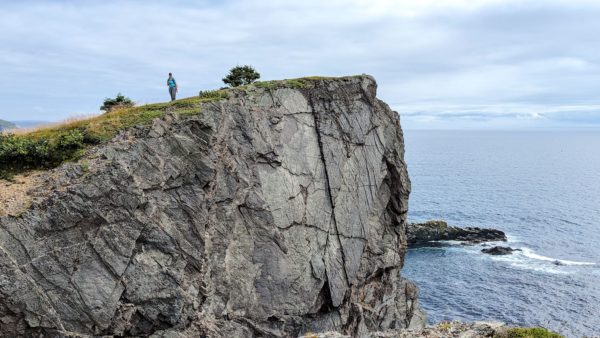
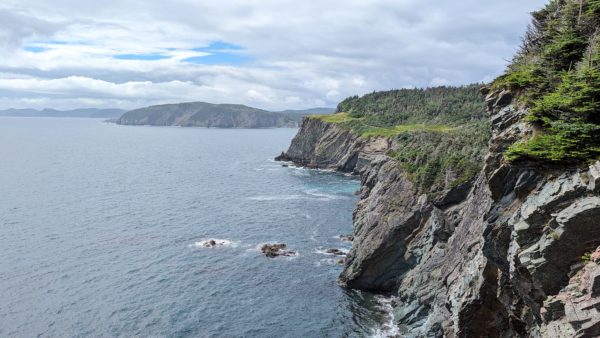
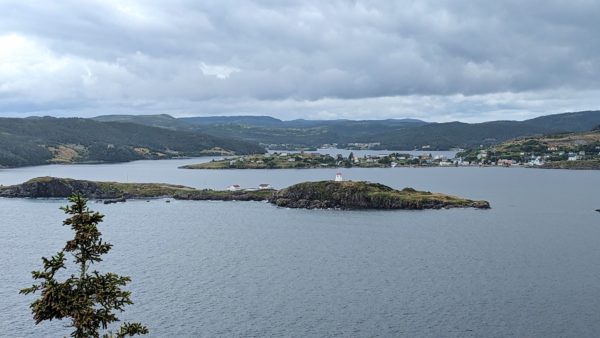
Further down the road, toward the southern end of the Bonavista peninsula, is Trinity East (pop ~70) and the town of Port Rexton (pop ~400). Mark and Linda suggested we’d like the Skerwink Trail in this area. So far we’ve enjoyed all of their Newfoundland recommendations, so of course we went for this one as well. We left camp and headed south in a dense fog, fingers crossed that it would lift. As we reached Port Rexton the fog was already quite a bit higher and less dense than when we left Bonavista. The trail began on an old railroad bed, which we followed for a kilometer/Half mile or so, and as we left the railroad bed and began to climb the sky continued to clear. Even though we started at sea level, we were quickly rewarded with views of tall, pretty sea stacks, carved of rock by the wind and water. Soon, the views turned to high cliffs along Dog Cove and the trail opened onto a big flat green surface above the cliffs that we christened ‘the lawn’ from where we looked out over the North Atlantic – under giant patches of blue sky!
The views continued as the trail hugged the jagged cliffs edge past Skerwink Rocks to Skerwink Head, encouraging us to snap perhaps 649 photos. A quick side trip to Skerwink Lookout provided 360-degree views, including Trinity Bay, the towns of Trinity and Trinity East, Sam White’s Cove and Port Rexton (the start/end of our day’s trek). As we returned to the trailhead, we walked through narrow, unpaved side streets through Port Rexton, admiring the picturesque town before heading back up to Bonavista for the night.
It doesn’t happen often, though it has several times, that our campsite is one of the highlights of our visit. This one was magical.
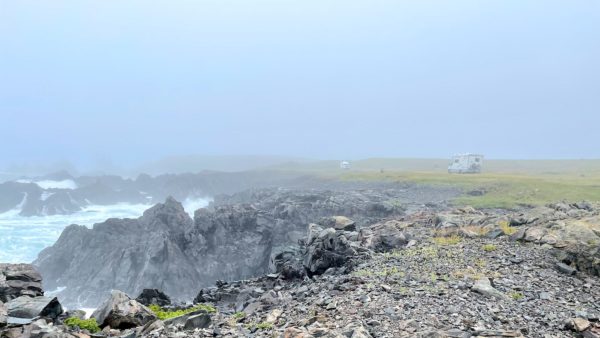
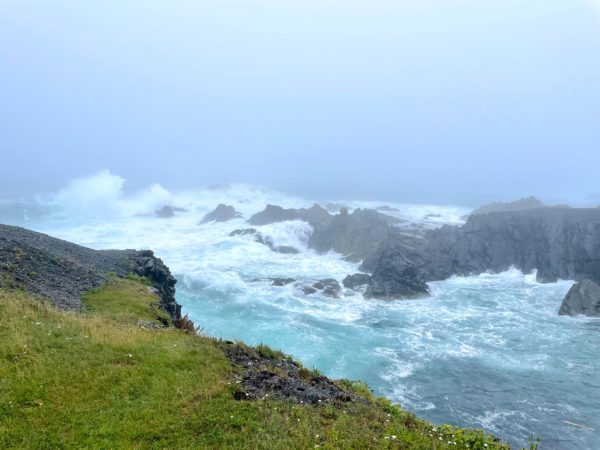
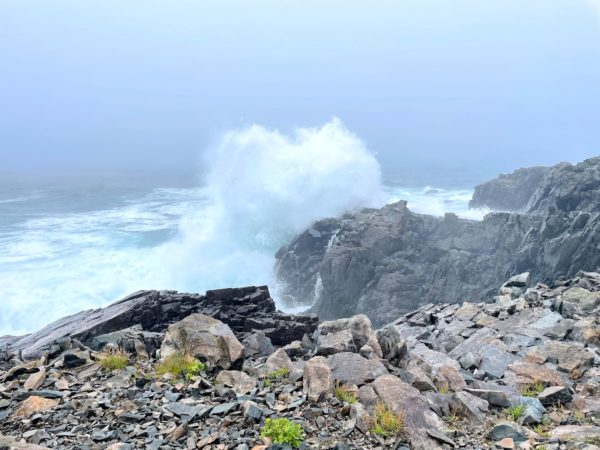
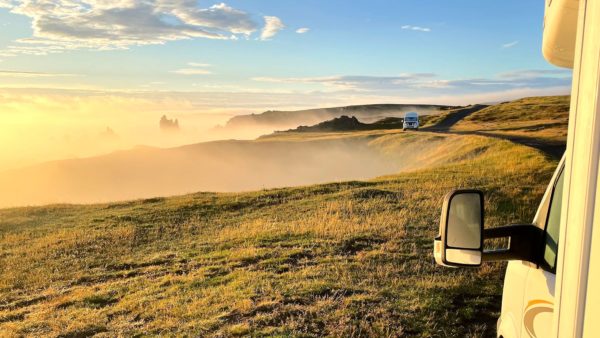
Cape Bonavista, at the very tip of the peninsula, may be one of the windiest places in Newfoundland. There are no homes here. There is a lighthouse at the far north end, and a large, community grazing land with a couple of gravel roads running through it. The town of Bonavista allows RV parking for up to 3 days along these roads. For our first night in town we’d found a spot along the rocky shore, protected from by wind by a slight rise, and OMG! That afternoon, the wind was whipping the North Atlantic into a frenzy against the rocks along the coast. We sat and watched the action through a light fog, squealing at each crash of the waves, bigger than the last. And the surf was loud! We did get used to the sound and the gentle rocking of the RV, so we slept well anyway. We woke early to a most beautiful, stop-everything-and look-at-this sunrise.
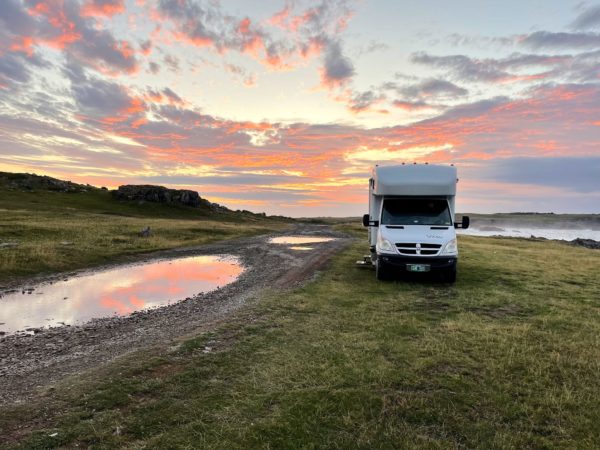
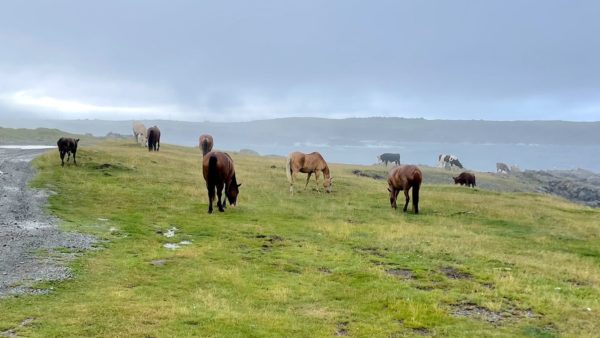
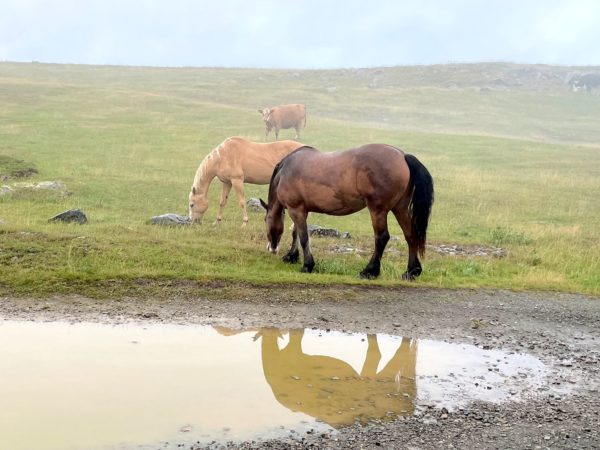
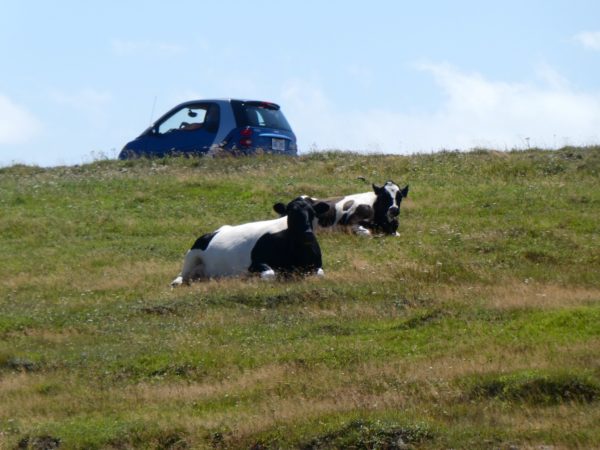
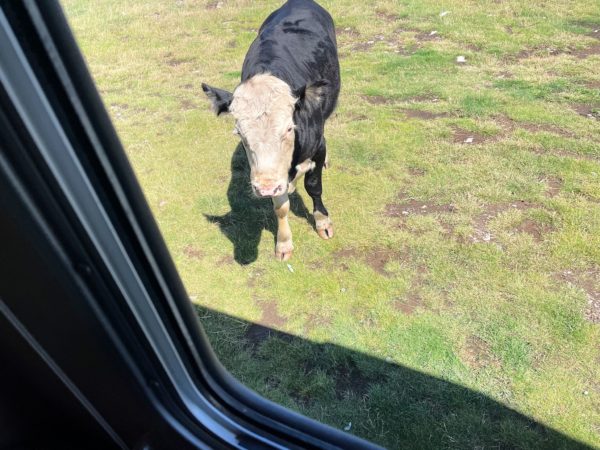
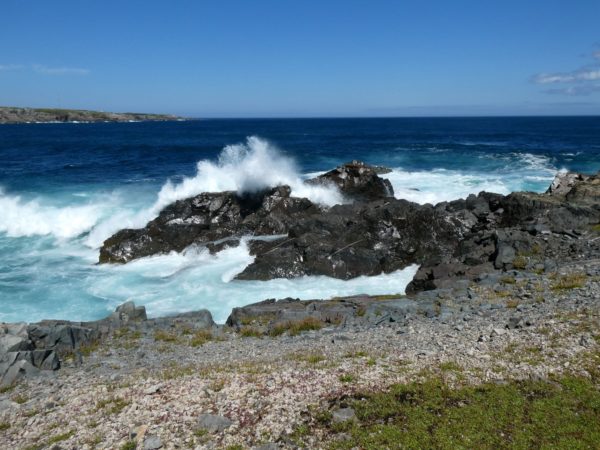
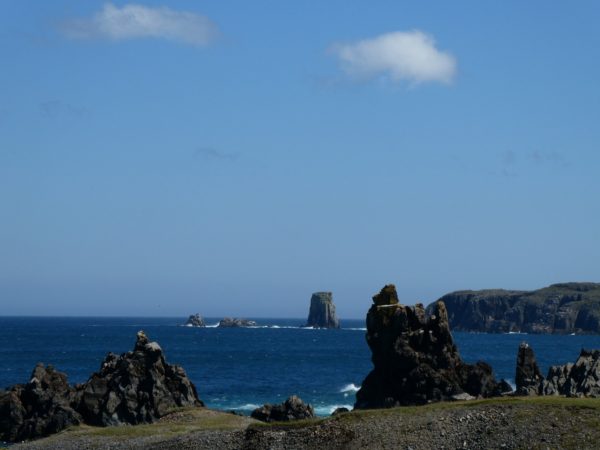
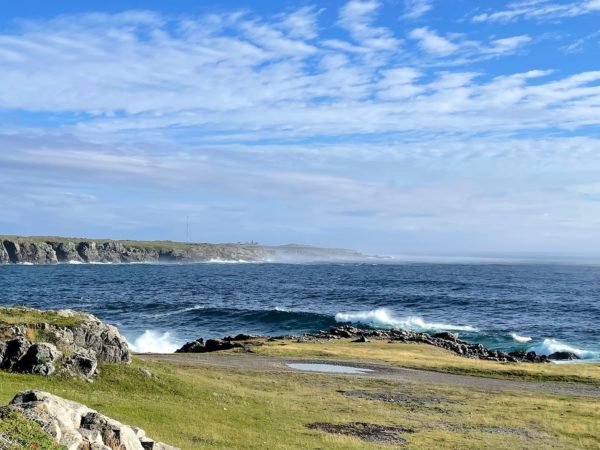
When we returned after the Skerwink hike, our favorite spot was still available. We were again mesmerized by the ruggedness of the surf, and this time treated to a beautiful, you-just-gotta-pay-attention sunset. We were again woken in the morning by a rocking of the RV, but this was not quite as gentle as the night before. What’s going on? I got up and cracked up laughing as I realized we were surrounded by grazing farm animals. One cow was licking the sea salt off the back of our rig! At one time, I counted about 30 animals – cows (at least 2 were pregnant), steers, a bull, about 6 horses, and one smaller critter that was likely a goat. Doug got up as the bull walked right up to our dining room window to say hello.
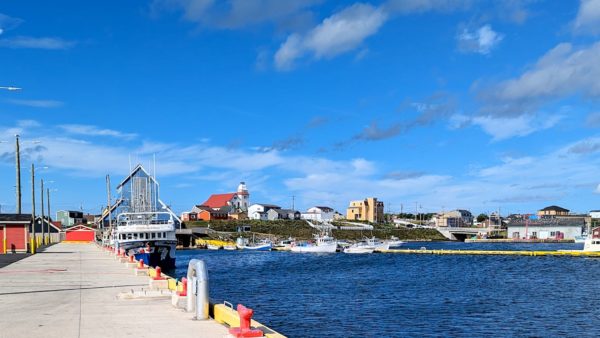
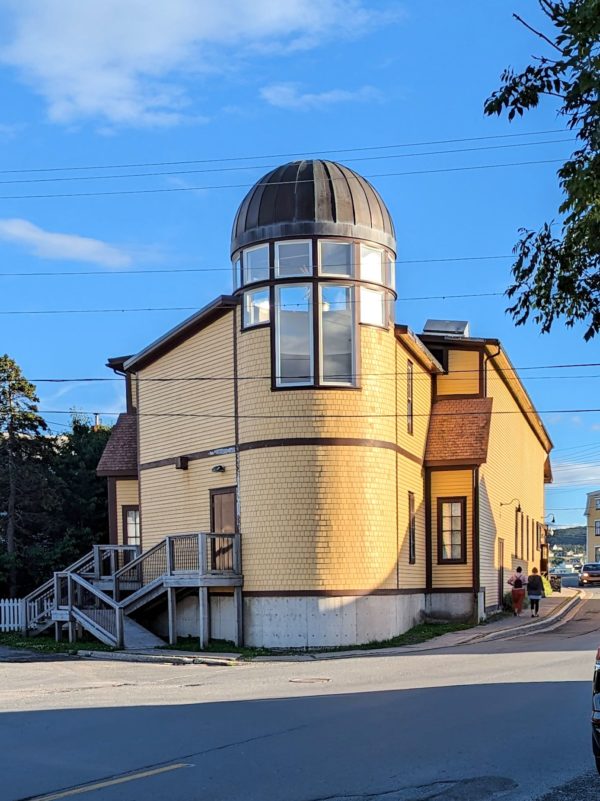
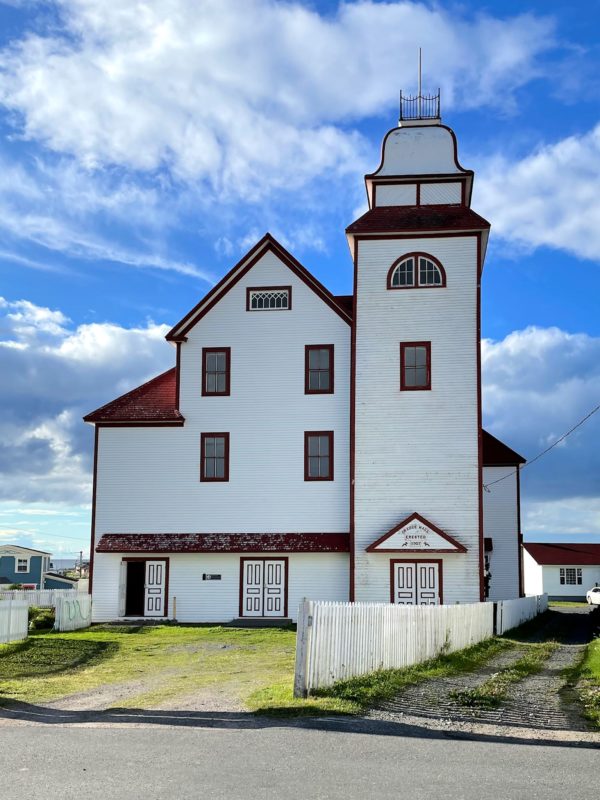
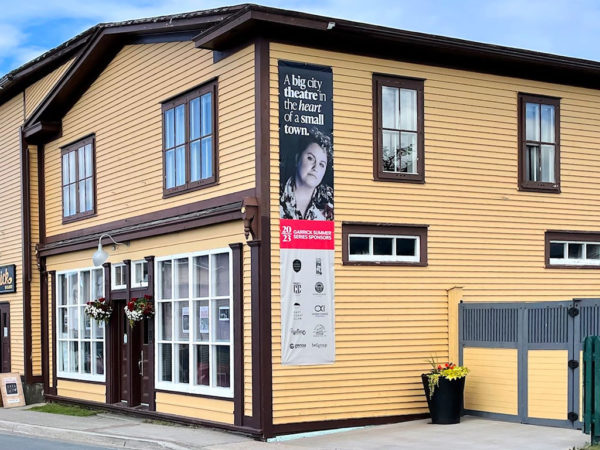
Back in town, Bonavista’s Garrick Theatre is a gem! Their tagline is ‘A big city theatre in the heart of a small town.’ The theatre offered nearly nightly entertainment from 1945-2000. Along with the rest of Newfoundland, the theatre struggled after the 1992 cod moratorium, when so many left town to find work, closing its doors in 2000. In 2003, the founder and his family donated the theatre to a local non-profit. After a time of reorganizing, fundraising and renovations, the oldest theatre in Newfoundland reopened in 2011 as a community-run cultural event center, attracting top talent as well as serving as a venue to showcase local talent. While we were in town, Rum Ragged, a Newfoundland band that has been nominated for a Juno Traditional Roots Album award and received numerous ECMA nominations, was the Saturday night show at the Garrick Theatre. Great music in a traditional Irish-Newfoundland style, original tunes, authentic instrumentation, fine acoustics, and amusing-to-hilarious stories between songs. The two founding members of the band, Mark Manning (singer/guitarist) and Aaron Collis (accordion) did most of the songwriting and most of the singing. Zack Nash added backup vocals, guitar, banjo, and bouzouki (which he traded off with Aaron). Cape Breton fiddle virtuoso Colin Grant completed the instrumentation brilliantly, adding also some percussion with a kick drum and a brief, exuberant clogging interlude.
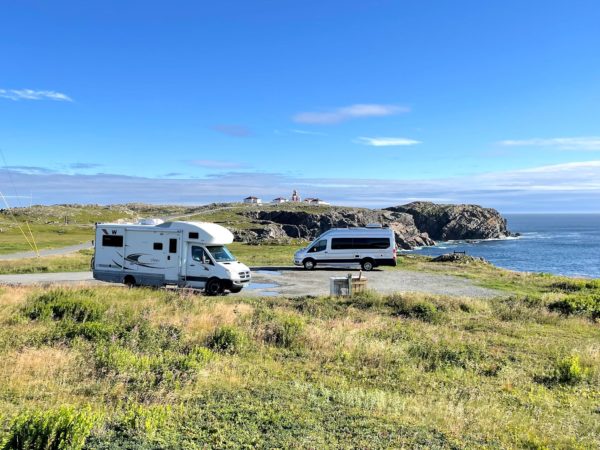
We’d started the evening with a wonderful dinner out at a tiny restaurant with a delightful menu – the Quintal Cafe & Bistro – so this was an official date night. Knowing we’d be heading for camp in the dark, we’d done a little scouting beforehand to identify boondocking options that would be easier to maneuver in (and find!) in the dark than our favorite, which was only feet away from significant cliffs, after all…
We woke to a magnificent view of the Cape Bonavista lighthouse. As the waves exploded relentlessly against the rocky coastline, it was obvious that these cliffs were changing imperceptibly, one crashing wave at a time, until a crack opened up, an opening would form, an instability developed, and suddenly a rockfall would change everything. We could see and feel the power of the water. And the giant splashes of water were a joy to watch.
For anyone who’s interested, more Cape Bonavista Camp 1, Camp 2, Skerwink Trail, Port Rexton, Puffins, Bonavista pix…

Quel beau voyage vous faites, bravo!
Les photos sont formidables!
On se reverra en septembre.
Merci pour la visite, Suzanne! Nous sommes heureaux que t’aime les photos. Oui, plus tard a Septembre!